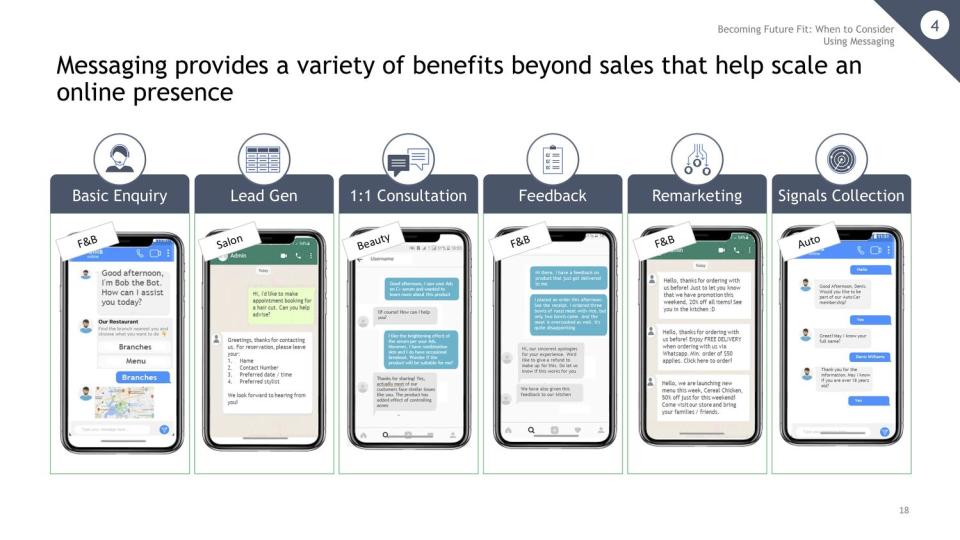Business messaging gaining traction in Asia Pacific

One-third of consumers across the region are chatting with businesses at least once a week, says a new study by Meta and BCG.
Business messaging has become integral to both consumers and businesses in Asia Pacific (APAC).
According to a recent study by Meta and Boston Consulting Group, one in three consumers in the region are chatting with businesses at least once a week, regardless of their age groups. Eighty percent of them also plan to continue using messaging to interact with businesses.
The majority of businesses (90%) surveyed also recognise that messaging apps are important for success, and are using them for various use cases.
More than half of companies say that they use business messaging for after-sales services, while an average of 50% use it to process orders and transactions. Meanwhile, 61% of retail and e-commerce firms process pre-sales enquiries through messaging.

Screenshot from the Business Messaging: The Quiet Channel Revolution Across Tech study by Meta and BCG.
Nestle is one company that is integrating business messaging into its operations. “The business and brand value proposition for Nestle has been to really engage the consumer and shopper end-to-end from the moment they might have a question about our product, providing them with rich information, and for them to decide whether to purchase the product. We are using this as a proof-of-concept to potentially scale the solution to other businesses from coffee to pet care,” says Charnae Morris, head of eBusiness at Nestle IndoChina.
“This report shows that the ability to message a business is emerging as a consumer baseline expectation. As business messaging largely takes place across social and messaging platforms, we are committed to enabling businesses of all sizes with capabilities to activate this channel for growth,” says Dan Neary, VP for Meta APAC.
Some tips on how organisations can start their business messaging journey include:
Define clear objectives for messaging
Evaluate the potential of messaging throughout the whole customer journey and see where it can help solve unique pain points in each phase depending on business context and challenges.Prioritise business messaging in your marketing strategy
Customers want to hear from businesses when the information is timely, personal and relevant. Build conversations that are seamless and go deeper, providing customers a convenient and smooth shopping experience.Adopt third-party messaging technology solutions and providers to rapidly scale messaging capabilities
This can result in higher chat conversion rates and the ability to handle large volumes of enquiries.
See Also:
Click here to stay updated with the Latest Business & Investment News in Singapore
Finding the right DX platform doesn't have to include a trade-off
Tech stocks remain attractive in spite of recession fears: PhillipCapital
Get in-depth insights from our expert contributors, and dive into financial and economic trends

 Yahoo Finance
Yahoo Finance 